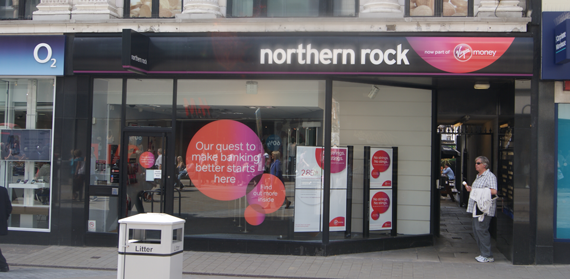Guest post by John Morris, Centre for Business in Society
On 14th September 2007, thousands of panicked customers rushed to withdraw money from Northern Rock after hearing that the Bank of England had stepped in to prop up the ailing bank.
A 30 per cent drop in Northern Rock’s share value followed, with many staff and customers losing thousands of pounds worth of shares because of it. But it was also part of a wider banking crisis, which had profound implications for the sector over the coming years. Northern Rock may not have been the moment when the crisis fully erupted but it can be considered to have been a stress test for the Bank of England in three key ways.
Firstly, the distress at Northern Rock was a stress test for the Governor of the Bank of England, Sir Mervyn King.
His credibility as Governor came under test, over both his delivery of statements and fixation on moral hazard, as he flip-flopped over the terms by which the bank would lend to Northern Rock.
Secondly, the Northern Rock episode was a stress test for the edict in central banking that highlighting a problem can exacerbate that problem. Was it realistic to think that the Bank of England could delay an announcement on Northern Rock until after the weekend?
Thirdly and most significantly, Northern Rock was an early example that the Bank of England needed to widen its risk imagination.
Northern Rock’s business model involved in gaining liquidity from a number of sources. It was thought to be highly unlikely that all of these sources would become impaired simultaneously.
This low probability–high impact event can be seen as an early precursor to a change in risk culture in which the Bank of England required higher levels of regulatory capital to be held in order to account for extreme events.
This is now a major plank of the Bank of England’s stress testing programme which has led to a better capitalised system.




Comments are disabled